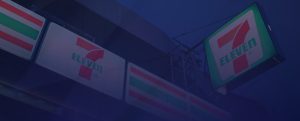Q4 2024 North Fort Worth Multifamily Market Report
Executive Summary
The North Fort Worth multifamily market, encompassing submarkets like Lewisville/Flower Mound, Denton, North Fort Worth, Hurst/Euless/Bedford, North Richland Hills/Haltom City, Grapevine, East Fort Worth, and Downtown Fort Worth, have emerged as a robust destination due to economic and demographic growth. Strategic developments like Alliance have transformed the area from farmland into an economic hub, with increasing demand for multifamily units driven by population growth and employment opportunities.
Lewisville/Flower Mound Overview
Key Attributes
- Proximity to major highways (I-35E and Highway 121).
- Strong educational system and retail amenities.
- Accessible commuter options via the A-train commuter line.
Market Highlights
- Vacancy: Stabilized at 9.6% (metro average: 11.3%).
- Rent Growth: -1.4% YoY, close to the market average of -1.7%.
- Construction: 1,600 units delivered in 12 months, with 1,000 more under construction.
- Asking Rents: Average $1,590/month; most B+ properties command $1,690/month.
Analysis
While demand is weaker, there is steady industrial growth and a blue-collar tenant base suggest opportunities for well-positioned workforce housing developments. Elevated vacancies are expected to normalize as inflationary pressures ease.
Denton Overview
Key Attributes
- College town anchored by the University of North Texas (UNT) and Texas Woman’s University (TWU).
- Growing single-family housing developments along major corridors like I-35E.
Market Highlights
- Vacancy: Elevated at 14.0% due to the new supply.
- Rent Growth: -2.0% YoY; B+ properties saw -2.7% growth.
- Construction: 2,500 units underway, or 9.5% of inventory.
- Asking Rents: $1,440/month, below the metro average of $1,540/month.
Analysis
Denton faces supply-side pressure, but strong population growth and university-driven demand offer long-term stability.
North Fort Worth Overview
Key Attributes
- Centralized industrial hub with 70 million SF of industrial space.
- Major employers: Charles Schwab, Deloitte, Lockheed Martin, and Hillwood.
Market Highlights
- Vacancy: Stable at 10.0% (10-year average: 9.1%).
- Rent Growth: -1.6% YoY, with high concessions among newer properties.
- Construction: 1,400 units underway; inventory doubled in the past decade.
- Asking Rents: Most B+ properties at $1,640/month.
Analysis
With strong economic drivers and reduced construction starts, vacancy rates are expected to remain stable. Rent recovery is likely by 2026.
Northwest Fort Worth Overview
Key Attributes
- Blend of urban and suburban environments with cultural hubs like West 7th and Sundance Square.
Market Highlights
- Vacancy: 15.7% due to a wave of new supply.
- Rent Growth: -1.1% YoY, better than the metro average.
- Construction: 2,900 units underway, representing 11.8% of inventory.
- Asking Rents: Average $1,600/month, with high-end options exceeding $3,800/month.
Analysis
Elevated vacancy rates are a short-term challenge, but long-term prospects are promising due to sustained demand for premium amenities.
Hurst/Euless/Bedford Overview
Key Attributes
- Proximity to DFW Airport and major employment hubs.
- Affordable rents compared to other Mid-Cities areas.
Market Highlights
- Vacancy: Low at 7.1%.
- Rent Growth: Flat (0.0%), outperforming the metro average of -1.7%.
- Construction: No active project; 1,000 units added over the past decade.
- Asking Rents: $1,450/month; build-to-rent properties pushing higher averages.
Analysis
Limited new supply and strong demand drivers ensure continued stability.
North Richland Hills/Haltom City Overview
Key Attributes
- Diverse economy with strong retail, healthcare, and manufacturing sectors.
Market Highlights
- Vacancy: 8.6%, below the metro average.
- Rent Growth: -1.9% YoY.
- Construction: 350 units delivered; no active projects.
- Asking Rents: $1,360/month, with premium areas like Hometown commanding higher rents.
Analysis
Balanced supply-demand dynamics offer resilience against broader market pressures.
Grapevine Overview
Key Attributes
- High-income area with top-tier amenities and proximity to DFW Airport.
- Affordable rent compared to other Mid-Cities areas.
Market Highlights
- Vacancy: Low at 6.5%.
- Rent Growth: -3.5% YoY, reflecting regional competition.
- Construction: 210 units underway; low historical supply.
- Asking Rents: $1,830/month for most B+ properties.
Analysis
Limited new supply and high-income demographics position Grapevine as a premium submarket for multifamily investments.
East Fort Worth Overview
Key Attributes
- Blue-collar workforce benefiting from stable industrial employment.
- Workforce housing catering to renters by necessity.
Market Highlights
- Vacancy: High at 16.6%, well above to 10-year average of 9.8%.
- Rent Growth: Meager at 1.6% compared to the Dallas-Fort Worth average of -1.6%.
- Construction: 670 units underway, the highest level in 20 years (6.0% of inventory).
- Asking Rents: About 50% of households are renter-occupied, with fewer than 15% holding a bachelor’s degree.
Analysis
While demand is weaker, there is steady industrial growth and a blue-collar tenant base suggest opportunities for well-positioned workforce housing developments. Elevated vacancies are expected to normalize as inflationary pressures ease.
Downtown Fort-Worth Overview
Key Attributes
- Cultural attractions like Sundance Square and Bass Performance Hall.
- Comparatively underbuilt multifamily market.
Market Highlights
- Vacancy: 12.2%, above the market average of 11.3%.
- Rent Growth: -1.7% YoY, aligning with the Dallas-Fort Worth norm.
- Construction: 1,800 units added in the past decade, with 300 units delivered in the past year.
- Asking Rents: Newer high-rises like Deco 969 set a high-water market at $3,771/month ($3.47/SF).
Analysis
Limited inventory amplifies the impact of new deliveries, but downtown remains a strong prospect for premium developments. Potential new projects, such as those from Dart Interests, could reshape the skyline and add to Fort Worth’s $2 billion downtown redevelopment efforts.
Key Takeaways
Market Highlights
- Total Inventory: 185,979 units (+4.9% YoY, from 177,310 prior period).
- Under Construction: 9,729 units (-24.2% YoY, from 12,833 prior period).
- 12-Month Absorption: 7,113 units (+119.0% YoY, from 3,248 prior period).
- Vacancy Rate 11.0% (+0.3% YoY, from 10.7% prior period).
Key Observations
1. Vacancy Trends:
- Submarkets like Grapevine and Hurst/Euless/Bedford maintain low vacancy rates, contributing to the total market average vacancy rate of approximately 10.6%.
- Elevated vacancy in Northwest Fort Worth and Denton signals short-term oversupply challenges.
2. Rent Growth:
- Most submarkets experienced negative rent growth, averaging -1.6% across the total market, though North Richland Hills/Haltom City and Hurst/Euless/Bedford showed relative resilience.
3. Construction Pipeline:
- Construction activity is tapering, offering relief to supply-side pressures across most submarkets. Across the Greater North Fort Worth market, approximately 7,960 units were delivered in the past year, and 9,960 units are currently under construction, reflecting a balanced yet active pipeline of development.
- Transit-oriented developments in areas like Lewisville highlight long-term planning for sustainable growth. Across the total market, approximately 7,960 units were delivered in the past year, with 9,960 units currently under construction.
4. Economic Drivers:
- Major employers and industrial hubs like Alliance continue to bolster demand for multifamily housing in North Fort Worth.
Recommendations
For Investors
Focus on submarkets with stabilized vacancy rates and strong economic drivers (e.g., Grapevine and North Fort Worth). Across the Greater North Fort Worth market, economic drivers include the presence of major employers like Charles Schwab, Deloitte, Lockheed Martin, and Hillwood’s Alliance hub. Combined, these submarkets benefit from strategic industrial growth, robust office employment, and proximity to DFW Airport, ensuring sustained demand for multifamily investments.
For Developers
Consider opportunities in transit-oriented developments and areas with low historical supply, such as Lewisville/Flower Mound. Conversely consider looking away from Denton at the moment since it is very concentration with supply.









